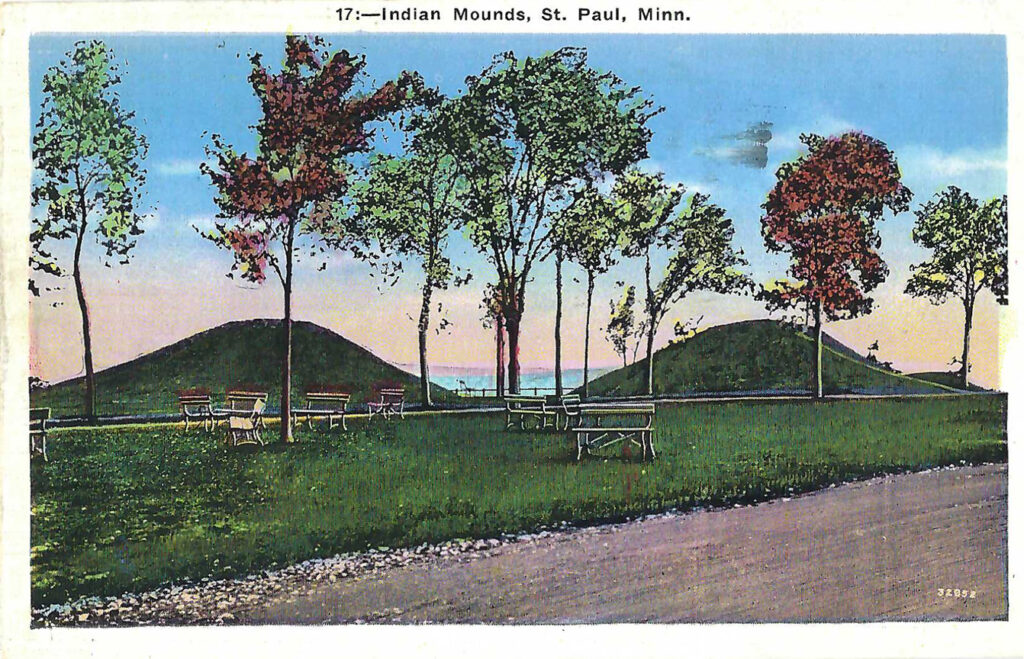
Michael Bushnell
Publisher
Continuing our History series of famous Indian Mounds, this week we travel north to St. Paul, Minnesota to Indian Mounds Regional Park, home to six prehistoric Native American burial mounds overlooking the Mississippi River. The oldest of the surviving mounds were constructed some 1,500 to 2,000 years ago by the Hopewell people atop the 450-million year old limestone bluffs that overlook what is now downtown St. Paul, Minnesota. At one time sixteen more mounds were located atop the bluffs but were lost to amateur excavation and development during the late 19th century.
People of the Dakota tribes later used the mounds to inter their dead also. Evidence of a Dakota village was found at the base of the bluffs in the mid 1700’s. These mounds were the tallest Native American mounds in Minnesota or Wisconsin with the exception of the Grand Mound near International Falls, MN.
Later excavations at the site revealed log tombs at the base of three of the mounds and a pit burial was found in another. Two of the mounds contained eight burial cists containing human remains as well as grave offerings such as shells, projectile points or perforated bear teeth.
Preservation of the area began in the late 1800’s and by 1896 enough property was assembled for the city to start landscaping. Part of that landscaping work however was the leveling of eleven of the mounds that apparently blocked the view of the river from the park, leaving six of the largest mounds for the official park.


















